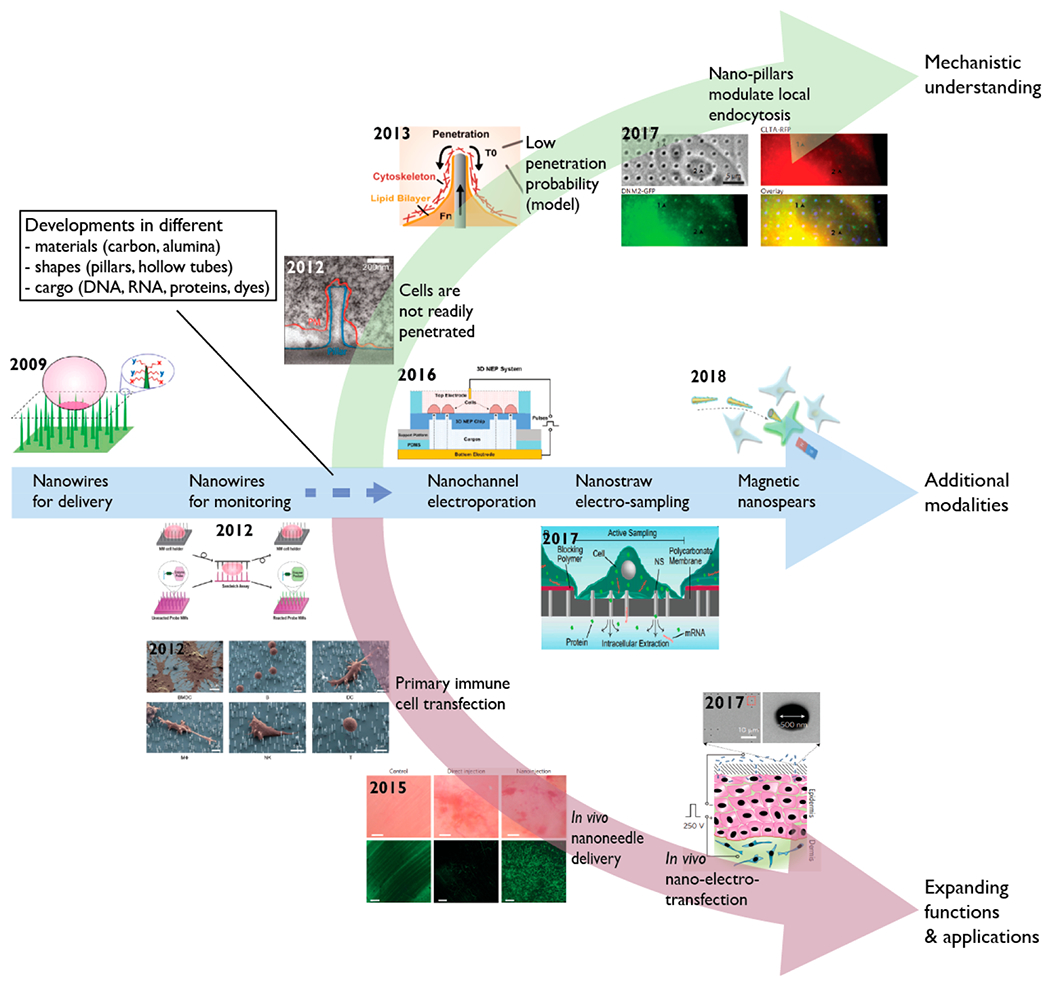Figure 1.

Historical development of nanostructures for intracellular delivery and sampling. Nanowires were described for cargo delivery7 and enzymatic monitoring11 by direct physical penetration through cell membrane. Throughout the past decade, nanostructures of different shapes and materials have been fabricated to deliver diverse cargo including nucleic acids, proteins, and small molecules to cell lines and primary cells. The use of electron microscopy12,13 and computational modeling14 demonstrated that although nanostructures could penetrate cell membrane, the frequency is low. This motivated coupling of electrical fields15,16 and magnetic forces17 to nanostructures to enhance delivery outcomes. In 2015, the first two in vivo applications using biodegradable nanoneedles for delivering DNA18 and quantum dots19 were reported, paving the route for future technologies such as nanostructures coupled with electrical control for in vivo transfection. Images adapted with permission from the following: ref 7, Copyright 2010 Proceedings of the National Academy of Sciences; ref 11, Copyright 2013 American Chemical Society; ref 12, Copyright 2012 American Chemical Society; ref 14, Copyright 2013 American Chemical Society; ref 15, Copyright 2016 Royal Society of Chemistry; ref 16, Copyright 2017 Proceedings of the National Academy of Sciences; ref 17, Copyright 2018 American Chemical Society; ref 22, Copyright 2012 American Chemical Society; ref 18, Copyright 2015 Nature Publishing Group; ref 31, Copyright 2015 Nature Publishing Group; ref 38, Copyright 2017 Nature Publishing Group.
